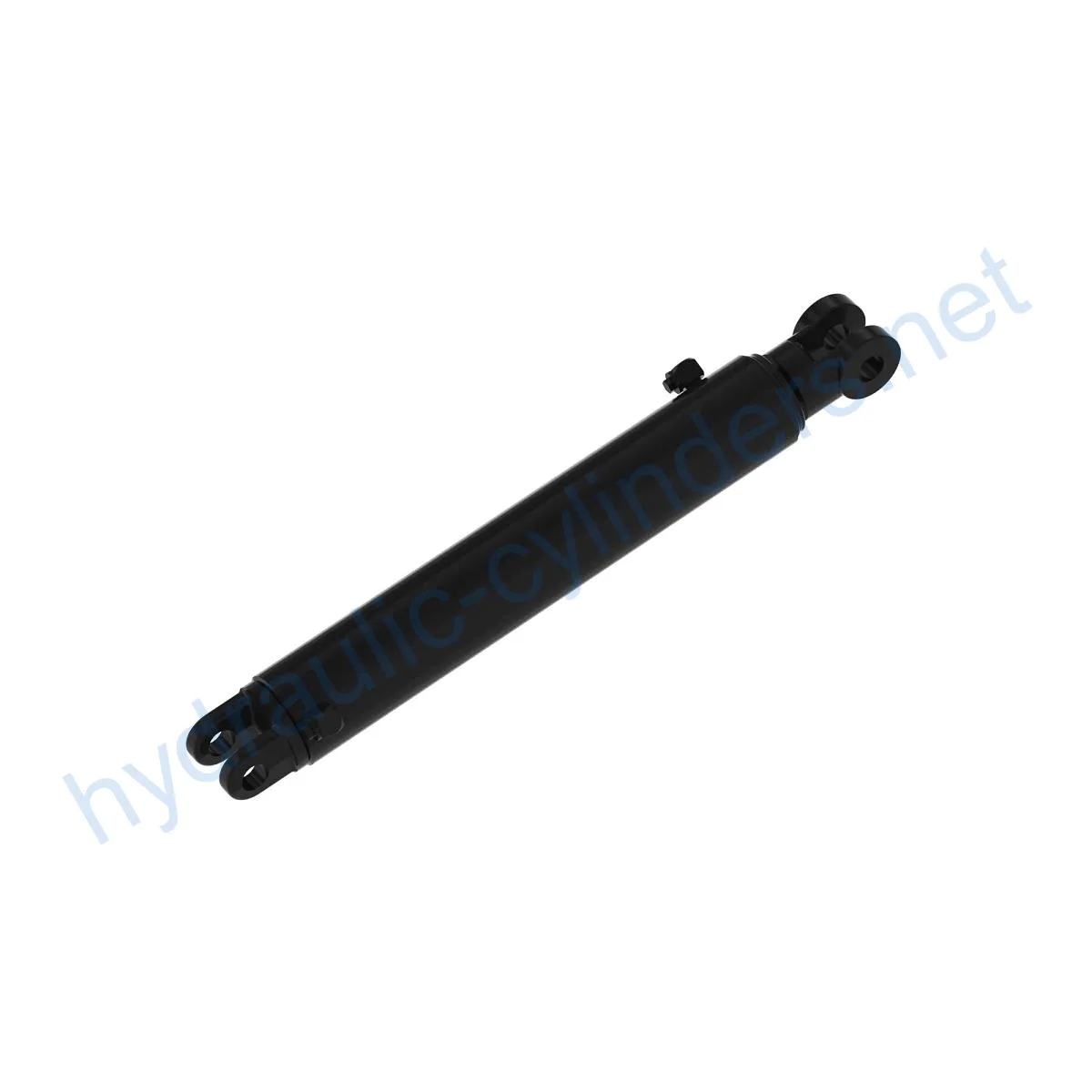Replacement Of AHC12284 Hydraulic Cylinder
Mint a hidraulikus hengerek egyik gyártója, szállítója és exportőre a mechanikai termékek, kínálunk hidraulikus hengerek és sok más termék.
Kérjük, lépjen kapcsolatba velünk a részletekért.
Posta:sales@hydraulic-cylinders.net
Hidraulikus hengerek gyártója, szállítója és exportőre.
Replacement Of AHC12284 Hydraulic Cylinder
Product Introduction
The Replacement Of AHC12284 Hydraulic Cylinder is a hydraulic component used in various machinery and equipment. It plays a crucial role in providing the necessary force and movement for different applications.
Specifications and Models
Weight: 29.43 lb
Height: 3.5 in
Width: 4.5 in
Length: 27.1 in
Models: 4730, 4830
Product Features
- Improved Equipment Performance: Replacing damaged or worn hydraulic cylinders can restore the normal operation of equipment, ensuring its performance in various applications.
- Enhanced Safety: Regularly replacing hydraulic cylinders can reduce safety risks caused by cylinder failure, ensuring the safety of operators and equipment.
- Overload Protection: New cylinder designs often incorporate improved overload protection mechanisms, enhancing safety.
- Quick Installation: Modern hydraulic cylinders are designed for easy installation and replacement, reducing downtime.
- Standardized Components: Many hydraulic cylinders are standardized products, facilitating the acquisition of replacement parts in the market.
Applications
The Replacement Of AHC12284 Hydraulic Cylinder finds its application in various scenarios:
Excavators
In excavators, hydraulic cylinders in the boom or bucket may get damaged due to long-term use or overload, requiring replacement to restore normal operation.
Cranes
The hydraulic cylinders in the crane’s lifting arm are prone to wear during frequent lifting and lowering processes, demanding regular replacement to ensure safety.
Tractors
The hydraulic cylinders in the front loader of tractors may experience leaks or performance degradation during continuous lifting and tilting operations, necessitating replacement.
Harvesters
During harvesting, hydraulic systems endure high pressures, and cylinders can get damaged due to fatigue. Timely replacement is required to maintain work efficiency.
Automated Production Lines
Hydraulic cylinders are used to control robotic arms and other automated equipment. Cylinder failure can impact production efficiency, requiring immediate replacement.
Die Casting Machines
In high-pressure and high-temperature environments, hydraulic cylinders in die casting machines may experience performance decline. Regular replacement ensures product quality.
Mining Equipment
Hydraulic cylinders are used for lifting and moving heavy loads in mining equipment. Due to harsh working conditions, regular inspections and replacements are necessary to avoid equipment failures.
Bulldozers
On the bulldozer’s blade, worn hydraulic cylinders can lead to reduced pushing capability. Timely replacement is needed to maintain operational efficiency.
Maintenance and Care
To ensure the longevity of the Replacement Of AHC12284 Hydraulic Cylinder, the following maintenance tasks should be performed:
Regular Inspections
Inspect the cylinder for any signs of wear, leaks, or damage. Address any issues promptly.
Proper Lubrication
Use the appropriate hydraulic oil and lubricate the cylinder to reduce friction and extend its lifespan.
Seal Replacement and Calibration Checks
Regularly replace worn seals to prevent leaks and perform calibration checks to ensure optimal cylinder performance.
Safety Considerations and Environmental Factors
When using hydraulic cylinders, it is crucial to prioritize safety measures. Proper use of safety equipment and following recommended guidelines is essential to prevent accidents and injuries. Additionally, considering environmental factors such as proper disposal of used hydraulic oil helps minimize negative impacts.
Troubleshooting and Common Issues
When encountering problems with the Replacement Of AHC12284 Hydraulic Cylinder, the following issues may arise:
Leakage
Leakage can occur due to worn seals or damaged cylinder components. Check and replace seals or faulty parts as necessary.
Insufficient Force
If the cylinder fails to provide the required force, it may be due to internal damage or a decrease in hydraulic pressure. Consult with a professional for diagnosis and repair.
Slow or Erratic Movement
Inconsistent or slow movement can indicate issues with the hydraulic fluid or cylinder components. Check the fluid level and quality, and inspect the cylinder for any obstructions or damage.
Tips for Troubleshooting and Problem Solving
- Refer to the product manual or consult with a professional for accurate diagnosis and repair methods.
- Perform regular preventive maintenance to minimize potential problems.
- Ensure correct installation, lubrication, and adjustment of the cylinder for optimal performance.
- Use appropriate installation brackets to securely fix the cylinder in place.
- Follow recommended inspection, repair, and replacement procedures.
- Utilize parts replacement and rebuilding services to extend the lifespan of the hydraulic cylinder.

Design Considerations and Selection Criteria
When choosing hydraulic cylinders, several design considerations and selection criteria should be taken into account:
Load Bearing Capacity
The hydraulic cylinder should be capable of handling the intended load without exceeding its maximum capacity.
Sealing and Durability
Using appropriate seals and durable materials ensures the cylinder’s longevity and minimizes the risk of leaks or failure.
Safety and Maintainability
The cylinder design should prioritize safety features and ease of maintenance, allowing for efficient inspections and repairs.
Sealing and Lubrication
To ensure effective sealing and lubrication of the hydraulic cylinder:
- Various sealing components, such as piston seals and rod seals, should be used, preferably made from wear-resistant materials like polyurethane or nitrile rubber.
- The cylinder body and threaded ends should undergo fine treatment to enhance wear resistance.
- Regularly add a suitable amount of hydraulic oil to lubricate the cylinder and reduce friction.
Regular Inspections and Preventive Maintenance
Regular inspections and preventive maintenance tasks are essential for the optimal performance and longevity of the hydraulic cylinder:
- Ensure proper installation, lubrication, and adjustment of the cylinder to prevent premature wear and damage.
- Provide accurate guidance for aligning the cylinder during installation.
- Recommend using appropriate installation brackets to secure the cylinder in place.
- Suggest inspection, repair, and replacement procedures to address any potential issues.
- Offer replacement parts and rebuilding services to enhance the lifespan of the cylinder.
- Provide tips to prolong the usage of the hydraulic cylinder.

Take a Tour of Our VR Factory:
Take a tour of our VR factory with the following
Hydraulic Cylinder Application:


